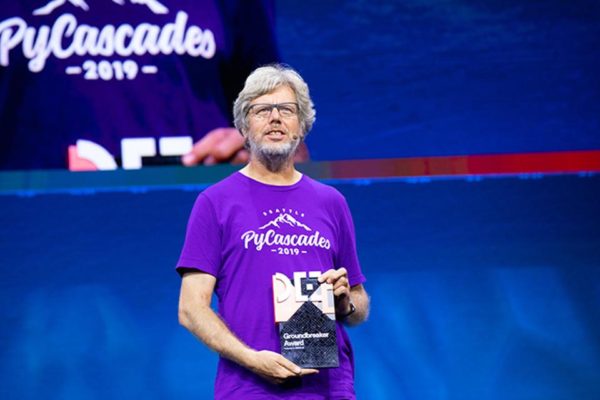The Mind at Work: Guido van Rossum on how Python makes thinking in code easier

The Mind at Work: Guido van Rossum on how Python makes thinking in code easier
A conversation with the creator of the world’s most popular programming language on removing brain friction for better work.
“In Python, every symbol you type is essential.”
Guido van Rossum
There are a whole bunch of common programming tasks that are easy in Python,” says Van Rossum. “For someone who is not yet a programmer, who wants to become a programmer, for those people Python is particularly easy to get.” Indeed, many computer science schools are switching over from Java to Python, because it’s much easier to grasp for beginners. The reasons behind this are complex, with many factors each reducing little bits of friction. What’s simple is the philosophy behind all of the improvements: Everything should have a necessary purpose. The lack of extraneous code makes it easier to focus on what you need to pay attention to. “In Python, every symbol you type is essential,” Van Rossum says.
This concision makes it easy to accomplish something meaningful in Python, which is one of the reasons for its wide adoption. “The typical way that we introduce Python to beginning programmers is also important. We can show them very small snippets of code that require very little understanding of terminology and concepts from programming before they make sense,” Van Rossum explains, “whereas the smallest Java program, for example, contains a whole bunch of what are, to the uninitiated eye, noise characters.”
This quietness and simplicity of design makes it easier to see what’s going on. “Python for me is incredibly visual,” says Van Rossum. “When I read Python, I definitely see it as a two-dimensional structure, rather than one-dimensional, like language. That is probably because Python uses indentation for grouping, but probably also because my mind just likes thinking visually.”
“Python is now also the language of amateurs, and I mean that in the best possible way.”
Guido van Rossum
He’s not the only one, of course, who thinks visually. We all do to some extent. But he’s particularly sensitive to the effects of the visual on cognition. “Some poorly formatted text can drive me crazy. They interrupt my visual parsing of the flow and the structure, and in that sense, I do think in Python,” Van Rossum admits. “I can grasp code much better when it’s formatted properly.” It takes more information to resolve the uncertainty about what code indentations mean if they’re arbitrary than if those indentations have a clear purpose, as they do in Python. So if the experience is easier, it’s because fewer bits of information have to be processed for you to know what’s going on.
Python’s readability is not just typographic, but conceptual. Van Rossum thinks Python may be closer to our visual understanding of the structures that we are representing in code than other languages because, “Python makes that structure mandatory.”
“While I was researching my book, CODERS,” says author Clive Thompson, “I talked to a lot of developers who absolutely love Python. Nearly all said something like ‘Python is beautiful.’ They loved its readability—they found that it was far easier to glance at Python code and see its intent. Shorn of curly brackets, indented in elegant visual shelves, anything written in Python really looks like modern poetry.” They also find that Python is fun to write, which is more important than it may seem. As Thompson writes, “When you meet a coder, you’re meeting someone whose core daily experience is of unending failure and grinding frustration.”
For full article please click this link on Dropbox Blog
By Anthony Wing Kosner
Anthony Wing Kosner is an editorial strategist at Dropbox. A former tech writer for Forbes.com, he still can’t shake the habit of checking Hacker News for things that make his head explode.
“You primarily write your code to communicate with other coders, and, to a lesser extent, to impose your will on the computer.”
Guido van Rossum